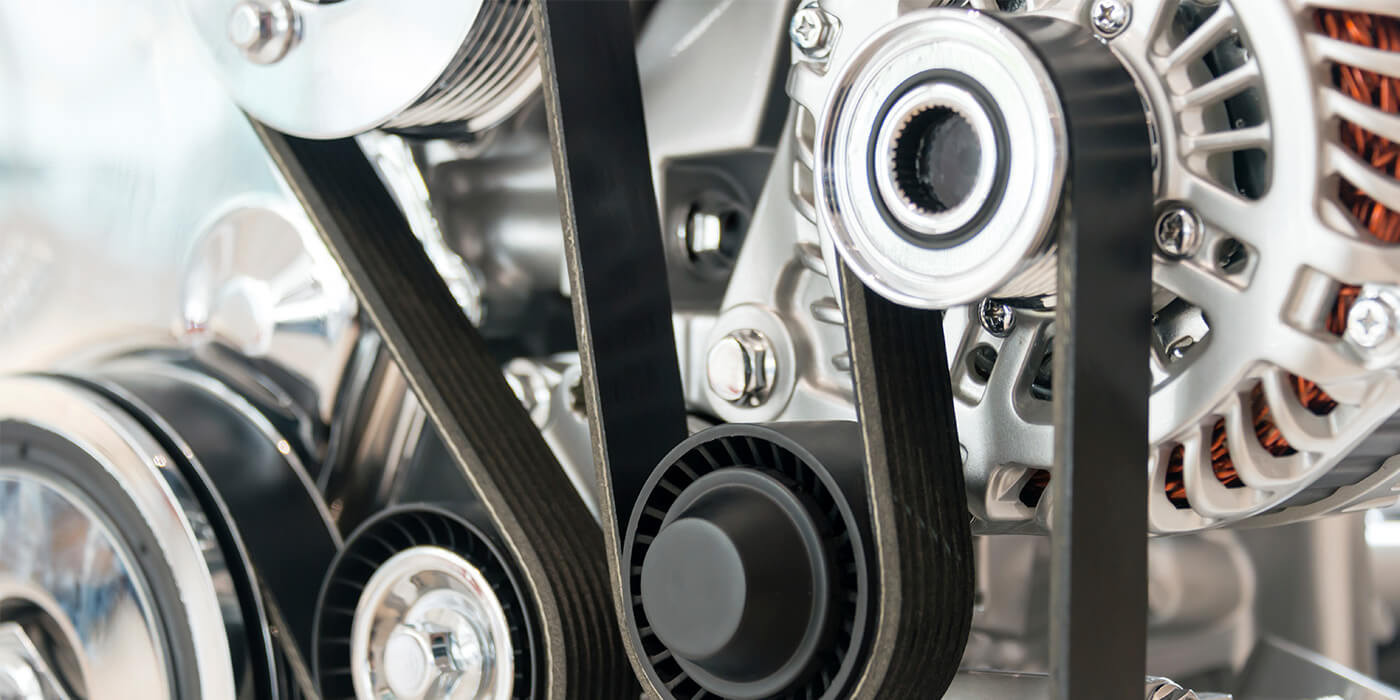
Auto Repair 101 - Serpentine Belts
Pop open your hood and you will see a spinning belt that twists and turns through the pulleys and other parts of your engine. Let’s learn what this belt does and when to replace it.

Auto Repair 101 Series – Serpentine Belts
You’re sitting at a stoplight in Blaine during the dead of a Minnesota winter and you hear a high-pitched squeal. It gets worse as the light turns green and you drive away. Your reaction is a mixture of panic and wondering what’s wrong? Chances are your serpentine belt needs maintenance.
The serpentine belt on your vehicle is a multi-ribbed belt that is responsible for powering a variety of functions such as the alternator, power steering, and A/C compressor, among others, and is one of the many crucial components that require periodic replacement due to wear and tear.
Let’s break down the function of a serpentine belt and when it may be time for a replacement.
What does a serpentine belt do?

The serpentine belt is aptly named after it’s resemblance to a snake because it snakes in and around the engine and it’s many components. The physics behind this (and the timing belt) is called a belt drive. The simplest belt drive consists of a driver pulley, a belt, and a driven pulley.
Referring to the adjacent animation, you will see that as the bottom left driver pulley rotates, it causes the belt to spin along with the downstream pulleys and cogs attached to it.
In the case of your car or truck, the driver pulley is connected to the crankshaft. As the engine undergoes it’s four cycles, it causes the crankshaft and corresponding driver pulley to spin along with the serpentine belt. Your serpentine belt, which is coiled around various downstream pulleys (e.g. alternator, water pump, A/C compressor, and power steering pump) then spins and “powers” each one of these components.
When Should I Replace My Serpentine Belt?
As you may have picked up by now, your vehicle is really a system of chain reactions. The cycles of your engine cause your pistons to move up and down, which is translated into a spinning crankshaft and serpentine belt, which then powers, for example, your alternator and all of your vehicles’ electronics.
There are many points of failure that if not properly maintained can cause issues upstream and downstream. In the case of your serpentine belt, making sure it operates properly is crucial simply because it is connected to and powers so many things.
The good news is that improvements in rubber technology have greatly extended the life of modern serpentine belts. Driver’s should always consult their owner’s manual for replacement intervals specific to your car or truck, but they generally last between 50,000 and 100,000 miles. Eventually, the wear and tear of friction and high operating temperatures will cause your belt to breakdown.
How do I know when to replace my serpentine belt?
Worn belts that are cracked or stretched can cause slips, misalignments with pulleys, and fluid leaks. Below are a few symptoms to look out for:

-
High pitched noise: this is usually caused by a slipping belt or improper tension and is a tell-tale sign to have a qualified mechanic inspect it.
-
Air conditioner or power steering issues: your air conditioner and power steering pump are powered by the serpentine belt. If you don’t get cold air or your steering wheel is difficult to turn, your serpentine belt may be the cause.
-
General cracks and wear: pop open your hood and visually inspect your belt. Obvious signs of breakdown are cracks, fraying fibers, and missing rubber.
If you are experiencing any of the above symptoms or suspect your serpentine belt is underperforming, it’s important to have schedule a repair as soon as possible to protect the longevity of your vehicle’s accessories.
If your serpentine belt does need replacing, it’s important to also inspect the tensioners for replacement as well. These devices maintain the proper tension on your belt so it operates as intended. Oftentimes, these may need adjusting or replacing when a new serpentine belt is needed.
The ASE certified technicians at Bona Bros. are happy to assist Twin Cities drivers with their serpentine belt issues. Whether it is a small compact sedan or heavy-duty freightliner, don’t hesitate to contact one of our experts to diagnose your car troubles and get you back on the road safely.
